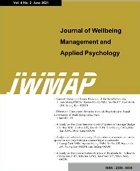 E-ISSN : 2586-6036
E-ISSN : 2586-6036
Ju-Yeon LEE
Woo-Taeg KWON
Abstract
Purpose: The small-scale environmental impact assessment has been in operation since its implementation in August 2000, and is a system that meets the purpose of sustainable development in consideration of the environment in areas requiring conservation. However, when preparing a small environmental impact assessment report, the contents of the reduction measures are too qualitative, or reports are prepared to simply list the compliance stipulated by individual laws, and the contents of consultations prepared by consultative agencies and review agencies are not much different. In addition, the direction of consultation on development projects for similar locations of the same project type is frequently changed by reflecting the subjective judgment of the consultative officer of the Ministry of Environment (Environment Agency). Therefore, this study attempted to improve the establishment of measures to reduce the existing simple listing of qualitative contents and the inconsistent presentation of review opinions by consultative agencies and review agencies. Research design, data and methodology: The research method extracted absolute evaluation items and relative evaluation items among small environmental impact assessment items, analyzed and presented detailed items, and prepared a distribution table for each section according to the details of the relative evaluation items, and presented them as a table. Results: This study was conducted to derive uniform results with objective indicators in the preparation and consultation process of a small-scale environmental impact assessment. Conclusions: Once a quantitative evaluation is established, the consultant can objectively determine and process the environmental impact.
- keywords
- Small scale environmental impact assessment, Absolute assessment items, Relative assessment items, Quantitative assessment
- Downloaded
- Viewed
- 0KCI Citations
- 0WOS Citations













